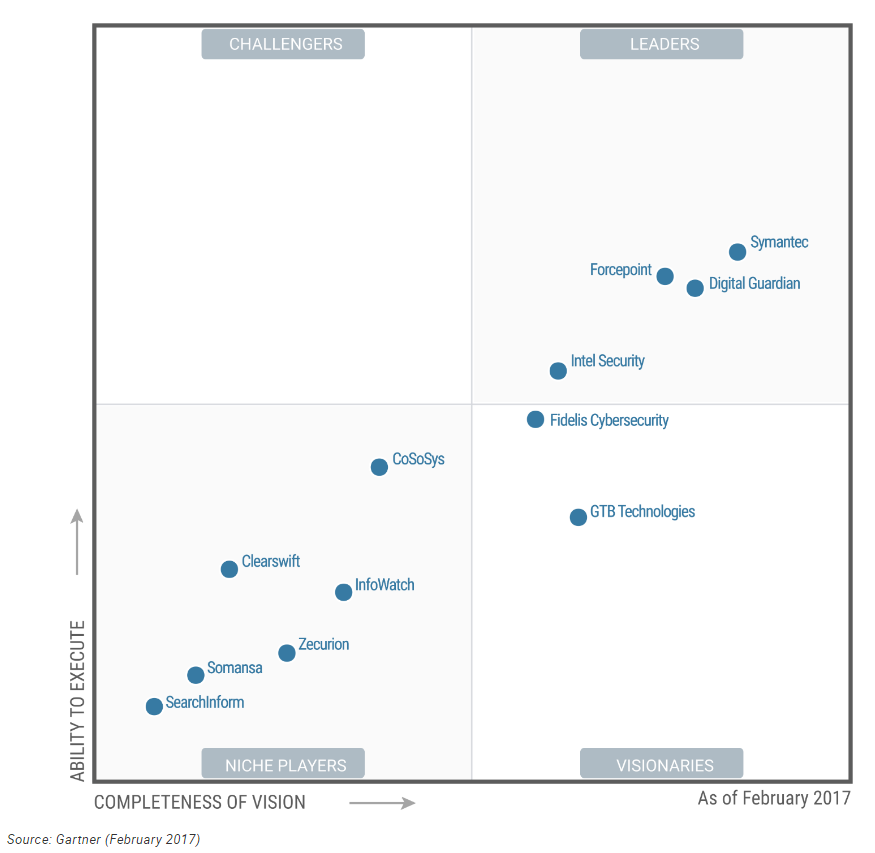As Data Loss Prevention Goes Mainstream, One Vendor Stands Out as a Leader

As incidents of government data breaches increase and threat landscapes grow, savvy federal, state and local government agencies should take a look at how data loss prevention technologies can help them discover, monitor, and protect sensitive data across clouds, mobile devices, and on-premise.
What is Data Loss Prevention?
Data loss prevention (DLP) is a critical strategy for protecting mobile devices as well as internal systems and networks from insider and outsider threats. In its 2016 Government Internet Security Threat Report, DLT partner, Symantec recommends that organizations should be making use of DLP technology so that they know who is doing what, with what data, in real time. Most importantly, DLP can block certain types of data from leaving an organization, such as health records and other confidential documentation.
Finding the Right DLP Solution
But, with a growing market playing field of vendors, where do you look for the right DLP solution? For an objective, industry-agnostic view, consider Gartner. Evaluating 12 vendors across competitive buying criteria, Gartner recently named Symantec as a Leader in the Gartner Magic Quadrant for Data Loss Prevention.
Gartner defines data loss prevention (DLP) as technology that “provide remediation for data loss based on content inspection and contextual analysis of data at rest” whether it’s at rest on-premises or in cloud apps and storage, in motion over the network, or in use on a managed end point device. “DLP products can execute responses — ranging from simple notification to active blocking — based on policy and rules defined to address the risk of inadvertent or accidental leaks, or exposure of sensitive data outside authorized channels.”
Evaluating 12 vendors, Symantec was placed in the leader category for a number of reasons:
• Symantec provides the broadest coverage of data loss channels, including cloud and web apps, endpoints, data repositories, and network communications, including encrypted SSL.
• The comprehensiveness of its sensitive data detection techniques. Known as “content-aware detection” technologies, from data fingerprinting to image analysis – users can identify content containing PII, employee records, health information, intellectual property, and more.
For example, exact data matching identifies sensitive data directly in your database, e.g., “block exfiltration of any employee name and their associated social security number”. This extends to unstructured data where indexed document matching applies a “full file fingerprint” to identify confidential information in unstructured data including Microsoft Office documents; PDF files; as well as binary files such as JPEGs, CAD designs, and multimedia files.
• Administration flexibility. Symantec makes it easy to manage and deploy data loss prevention with a single web-based console on which you can define data loss policies, review and remediate incidents, and perform system administration across all of your endpoints, mobile devices, cloud-based services, and on-premise network and storage systems.
Congratulations to Symantec, and stay tuned for more updates as Symantec’s engineers seek to integrate disjointed security technologies, like DLP, cloud security, identity management, and encryption, and deliver a simplified cloud and information-centric security to its customers. Read more on the Symantec blog.


















































